-
 No link between paracetamol and autism, major review finds
No link between paracetamol and autism, major review finds
-
Typhoon Fung-wong floods Philippine towns, leaves 5 dead in its wake
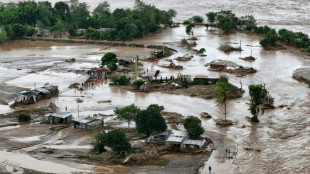
-
 France's Sarkozy says prison a 'nightmare' as prosecutors seek his release
France's Sarkozy says prison a 'nightmare' as prosecutors seek his release
-
Guinness maker Diageo picks new CEO after US tariffs cloud

-
 China suspends 'special port fees' on US vessels
China suspends 'special port fees' on US vessels
-
US senators take major step toward ending record shutdown
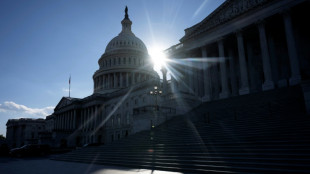
-
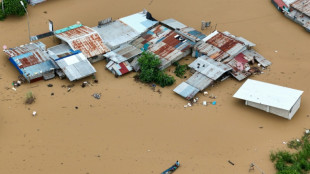 Typhoon Fung-wong leaves flooded Philippine towns in its wake
Typhoon Fung-wong leaves flooded Philippine towns in its wake
-
From Club Med to Beverly Hills: Assinie, the Ivorian Riviera
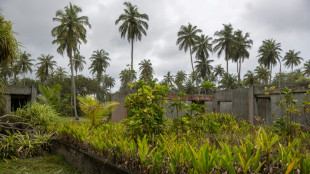
-
 The 'ordinary' Arnie? Glen Powell reboots 'The Running Man'
The 'ordinary' Arnie? Glen Powell reboots 'The Running Man'
-
Typhoon exposes centuries-old shipwreck off Vietnam port
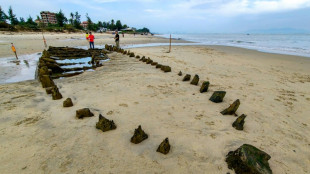
-
 French court to decide if ex-president Sarkozy can leave jail
French court to decide if ex-president Sarkozy can leave jail
-
China lifts sanctions on US units of South Korea ship giant Hanwha

-
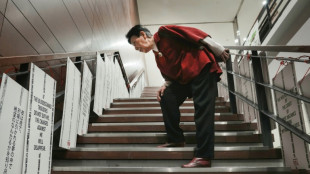 Japan death row inmate's sister still fighting, even after release
Japan death row inmate's sister still fighting, even after release
-
Taylor sparks Colts to Berlin win as Pats streak hits seven

-
 Dreyer, Pellegrino lift San Diego to 4-0 MLS Cup playoff win over Portland
Dreyer, Pellegrino lift San Diego to 4-0 MLS Cup playoff win over Portland
-
Indonesia names late dictator Suharto a national hero

-
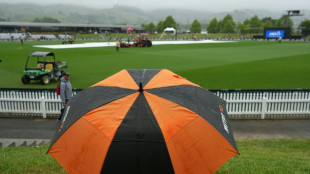 Fourth New Zealand-West Indies T20 washed out
Fourth New Zealand-West Indies T20 washed out
-
Tanzania Maasai fear VW 'greenwashing' carbon credit scheme
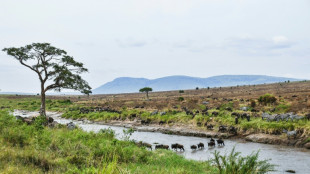
-
 Chinese businesswoman faces jail after huge UK crypto seizure
Chinese businesswoman faces jail after huge UK crypto seizure
-
Markets boosted by hopes for deal to end US shutdown
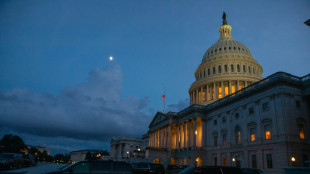
-
 Amazon poised to host toughest climate talks in years
Amazon poised to host toughest climate talks in years
-
Ex-jihadist Syrian president due at White House for landmark talks

-
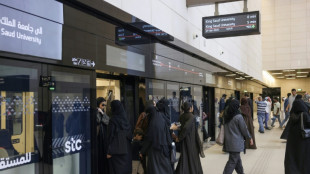 Saudi belly dancers break taboos behind closed doors
Saudi belly dancers break taboos behind closed doors
-
The AI revolution has a power problem

-
 Big lips and botox: In Trump's world, fashion and makeup get political
Big lips and botox: In Trump's world, fashion and makeup get political
-
NBA champion Thunder rally to down Grizzlies

-
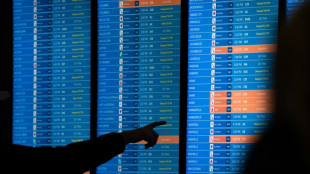 US senators reach deal that could end record shutdown
US senators reach deal that could end record shutdown
-
Weakening Typhoon Fung-wong exits Philippines after displacing 1.4 million
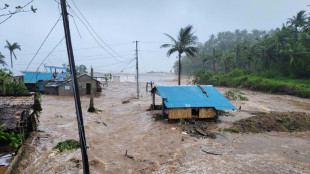
-
 Lenny Wilkens, Basketball Hall of Famer as player and coach, dies
Lenny Wilkens, Basketball Hall of Famer as player and coach, dies
-
Arrive AI Growth Spurt Prompts Move to New Headquarters

-
 Organto Foods Begins Trading On OTCQX(R) Best Market In The United States
Organto Foods Begins Trading On OTCQX(R) Best Market In The United States
-
Classover Partners with MiniMax on Breakthrough Real-Time AI Tutor, Delivering Near-Human Voice and Emotion-Aware Interaction

-
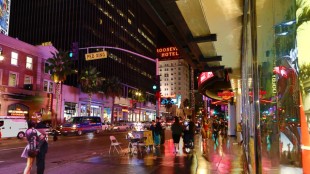 Mosaic Welcomes U.S. Decision to Add Phosphate and Potash to Critical Minerals List
Mosaic Welcomes U.S. Decision to Add Phosphate and Potash to Critical Minerals List
-
Critical Elements Announces the Appointment of Mr. Kenneth Williamson as Director of Exploration
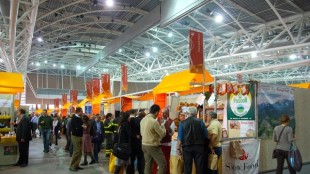
-
 JSC UzAuto Motors Announces Tender Offer
JSC UzAuto Motors Announces Tender Offer
-
Kingfisher Metals Reports 110 Meters of 0.47 g/t Gold in ~500 m step-out at Hank and Extends Gold in Soil Anomaly at Hank on the HWY 37 Project, Golden Triangle, British Columbia
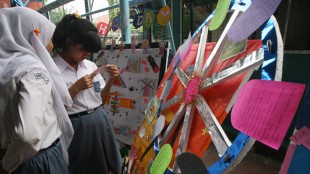
-
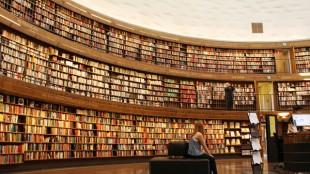 Empire Metals Limited - Speaking at TZMI Congress
Empire Metals Limited - Speaking at TZMI Congress
-
Sir Dave Lewis Appointed Diageo plc CEO

-
 Griffin wins PGA Mexico title for third victory of the year
Griffin wins PGA Mexico title for third victory of the year
-
NFL makes successful return to Berlin, 35 years on
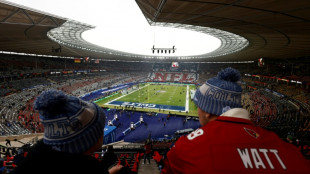
-
 Lewandowski hat-trick helps Barca punish Real Madrid slip
Lewandowski hat-trick helps Barca punish Real Madrid slip
-
George warns England against being overawed by the All Blacks

-
 Lewandowski treble helps Barca beat Celta, cut gap on Real Madrid
Lewandowski treble helps Barca beat Celta, cut gap on Real Madrid
-
Neves late show sends PSG top of Ligue 1, Strasbourg down Lille

-
 Inter go top of Serie A after Napoli slip-up
Inter go top of Serie A after Napoli slip-up
-
Bezos's Blue Origin postpones rocket launch over weather
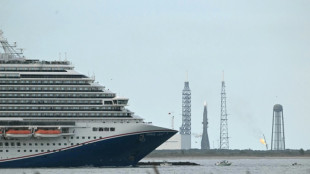
-
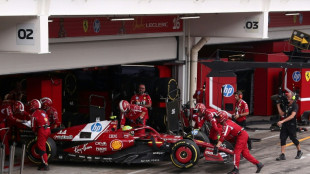 Hamilton upbeat despite 'nightmare' at Ferrari
Hamilton upbeat despite 'nightmare' at Ferrari
-
Taylor sparks Colts to Berlin win, Pats win streak hits seven

-
 Alcaraz and Zverev make winning starts at ATP Finals
Alcaraz and Zverev make winning starts at ATP Finals
-
Protests suspend opening of Nigeria heritage museum

Is Australia’s Economy Doomed?
The Australian economy, long admired for its resilience and resource-driven growth, faces mounting concerns about its future trajectory. With global economic headwinds, domestic challenges, and structural vulnerabilities coming to the fore, analysts are questioning whether the nation’s prosperity is at risk. While some warn of a potential downturn, others argue that Australia’s adaptability and strengths could steer it clear of doom. A closer look reveals a complex picture of risks and opportunities shaping the country’s economic outlook.
Australia’s economy has historically thrived on its vast natural resources, particularly iron ore, coal, and natural gas, which have fueled exports to Asia, especially China. However, global demand for these commodities is softening. China’s economic slowdown, coupled with its pivot toward green energy, has reduced reliance on Australian coal and iron ore. In 2024, iron ore prices dropped significantly, impacting export revenues. This decline has exposed Australia’s heavy dependence on a single market, raising alarms about the need for diversification. Efforts to expand trade with India and Southeast Asia are underway, but these markets cannot yet offset the loss of Chinese demand.
Domestically, inflation remains a persistent challenge. In 2024, inflation hovered around 3.5%, down from its 2022 peak but still above the Reserve Bank of Australia’s (RBA) 2-3% target. High energy costs and supply chain disruptions have kept prices elevated, squeezing household budgets. Wage growth, while improving, has not kept pace with inflation, eroding real incomes. The RBA’s response—raising interest rates to 4.35%—has cooled the housing market but increased borrowing costs for households and businesses. Mortgage stress is rising, with many Australians grappling with higher repayments amid stagnant wages.
The housing crisis is another sore point. Skyrocketing property prices in cities like Sydney and Melbourne have locked out first-time buyers, fueling inequality. Construction costs have surged due to labor shortages and expensive materials, slowing new housing supply. Government initiatives to boost affordable housing have fallen short, leaving young Australians pessimistic about homeownership. This dynamic not only strains social cohesion but also hampers economic mobility, as wealth concentrates among older, property-owning generations.
Labor market dynamics add further complexity. Unemployment remains low at around 4.1%, a near-historic achievement. However, underemployment is creeping up, and many jobs are in low-wage, insecure sectors like retail and hospitality. Skilled worker shortages in critical industries—healthcare, engineering, and technology—persist, hampering productivity. Immigration, a traditional solution, has resumed post-pandemic, but visa processing delays and global competition for talent limit its impact. Without addressing these gaps, Australia risks stalling its economic engine.
Climate change poses a long-term threat. Extreme weather events—floods, bushfires, and droughts—have become more frequent, disrupting agriculture and infrastructure. The agricultural sector, a key economic pillar, faces declining yields due to unpredictable weather. Transitioning to renewable energy is essential, but progress is uneven. While Australia leads in solar adoption, its reliance on coal for domestic power generation undermines green ambitions. The cost of transitioning to net-zero emissions by 2050 is estimated at hundreds of billions, straining public finances already stretched by aging population costs.
Public debt, while manageable at around 40% of GDP, is another concern. Pandemic-era stimulus and infrastructure spending have driven deficits, with net debt projected to reach $1 trillion by 2027. Tax revenues from mining have cushioned the blow, but their decline could force tough choices—higher taxes or spending cuts—both politically contentious. The government’s focus on renewable energy and defense spending, including the AUKUS nuclear submarine deal, adds pressure to an already tight budget.
Yet, Australia is not without strengths. Its services sector, particularly education and tourism, is rebounding post-COVID, with international students and visitors returning in droves. The tech sector, though small, is growing, with startups in fintech and biotech attracting global investment. Critical minerals like lithium and rare earths offer new export opportunities as the world electrifies. Trade agreements with the UK, EU, and Indo-Pacific nations could open new markets, reducing reliance on China. Moreover, Australia’s stable institutions and skilled workforce provide a foundation for long-term growth.
Still, structural issues loom large. Productivity growth has stagnated, lagging behind global peers. An overreliance on housing and mining for wealth creation has crowded out investment in manufacturing and innovation. The education system, once a global leader, struggles to produce graduates aligned with future needs, particularly in STEM fields. Indigenous economic exclusion remains a persistent drag, with gaps in employment and income barely narrowing.
The question of whether Australia’s economy is doomed hinges on its ability to adapt. Pessimists point to declining commodity prices, rising debt, and climate risks as harbingers of decline. Optimists highlight the nation’s track record of dodging recessions—avoiding one for over three decades until COVID—and its capacity for reform. Policy choices in the coming years will be critical. Boosting productivity, diversifying exports, and investing in skills and renewables could secure prosperity. Failure to act, however, risks a slow slide into stagnation.
For now, Australia stands at a crossroads. Doomed? Not yet. But the warning signs are clear, and complacency is not an option.

Zelenskyy: ‘What worked in Israel work also in Ukraine’

Electric car crisis: Future of a Audi plant?

Vladimir Putin, War criminal and Dictator of Russia

EU vs. Hungary: Lawsuit over ‘national sovereignty’ law

Ukraine: Zelenskyy appeals for international aid

Lebanon: Is a new wave of refugees coming to the EU?

Terrorist state Iran attacks Israel with missiles

Belarus: ICC investigates dictator Lukashenko

NATO: Ukraine ‘at the top of the list!’

NATO is training to fight cyber attacks

Digital Ocean Twin: Protecting the Oceans



